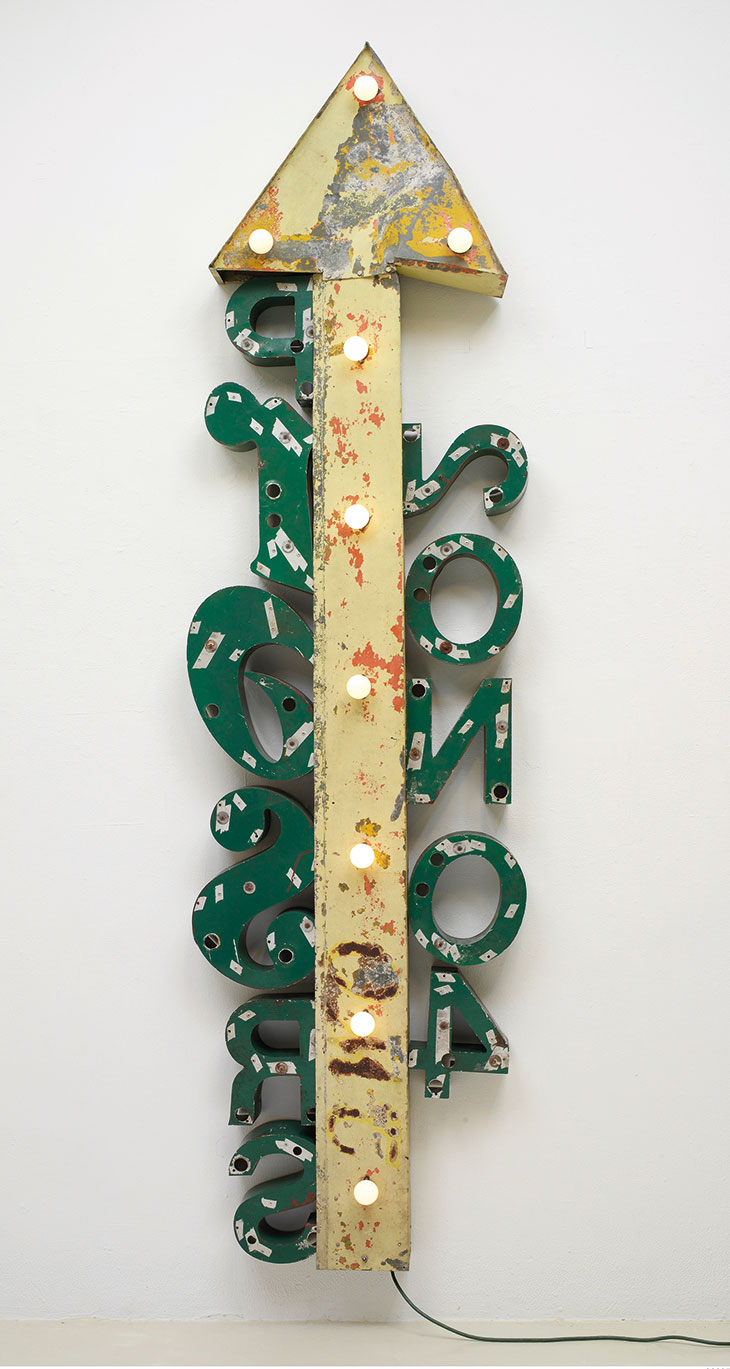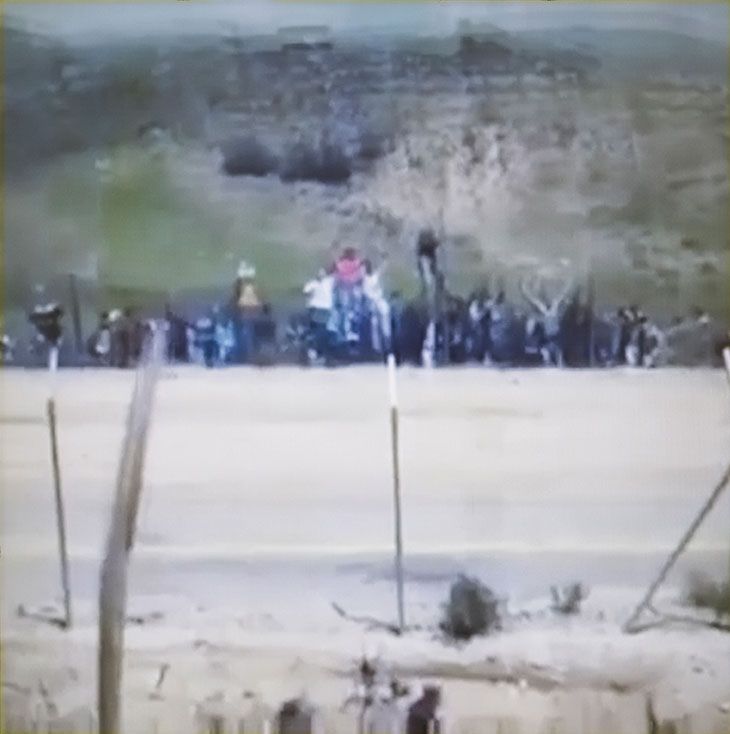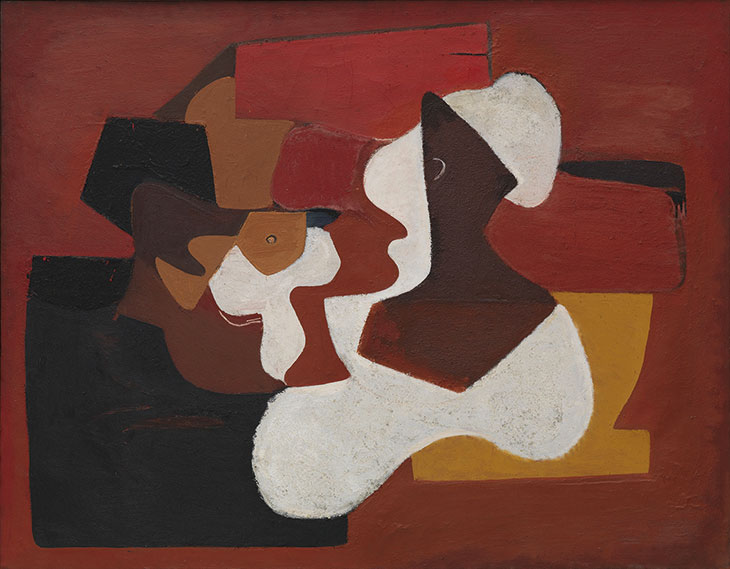‘Art Basel is the only fair that ticks every box,’ says Marc Glimcher, president of Pace – and he should know: his gallery exhibits at around 12–15 fairs each year. Indeed, since its dealer-led start in 1970, when 16,000 people visited 90 exhibitors, Art Basel has become the most prestigious fair on the circuit, this year fielding 290 top-notch galleries with an anticipated 95,000 guests.
A large part of the fair’s success is the wealthy Swiss city itself, steeped in a deep history of collecting and with museums and institutions that look far beyond above Basel’s nine square miles. The 49th edition runs from 14–17 June and looks to recognise its home town from the outset. As visitors arrive at the Messeplatz, they will see a specially commissioned project, organised by the public art producer Creative Time, for which architect Santiago Cirugeda is working with volunteers to build a functioning mini-city using locally sourced and second-hand materials. ‘Even wealthy cities go beyond the one per cent. People from Basel are building the work and will go back to their community with new construction skills,’ says Marc Spiegler, global director of Art Basel. In other Creative Time productions, the dance-trained artist Isabel Lewis hosts participatory sessions for the public in a temporary structure, and Spanish artist Lara Almarcegui is building a large installation from the gravel deposits of a local quarry.

Soaring Dribble Glut (1992), Robert Rauschenberg. Pace, $3m.
Inside the fair, important works by big-name, market-friendly artists will be on show, reflecting Art Basel’s status. Hauser & Wirth’s booth includes Arshile Gorky’s Still Life of 1929 ($8.5m); Tornabuoni has works from Alberto Burri’s sought-after Plastiche series (starting at €5m) and Pace brings one of Robert Rauschenberg’s Glut works, which repurpose petrol station signs and scrap metal. Soaring Dribble Glut dates from 1992, and is priced at $3m.
Among the blockbuster works, visitors can also expect international politics to loom large, as they do over many nearby coinciding exhibitions. ‘We’re in a highly political moment. Artists feel empowered and obligated to speak about issues around us,’ Spiegler says.
In the Statements section of solo projects by emerging artists, Paris gallery mor charpentier, a newcomer to the fair, brings an eight-monitor video installation by Lawrence Abu Hamdan, This whole time there were no land mines (2017), which includes found mobile-phone footage and audio recordings made during an Israeli-Syrian border breach in 2011 (price undisclosed). In the main Galleries section, Madrid’s Galería Juana de Aizpuru presents an array of dresses designed by Alicia Framis, each one asking in 15 different languages ‘Is My Body Public?’ (€6,000 each or €45,000 for the collection).

This whole time there were no land mines (still; 2017), Lawrence Abu Hamdan. Mor charpentier, price undisclosed. © Lawrence Abu Hamdan; courtesy mor charpentier, Paris
Racial discrimination is also examined, not least in Doreen Garner’s installation of silicon body parts that reference the medical experiments on enslaved black women in the mid 1800s. Accompanying medical journal records reveal the belief that black women had a higher tolerance for pain (JTT gallery; prices undisclosed). The Kunstmuseum Basel presents solo shows from black American artists of two generations, Sam Gilliam and Theaster Gates (respectively ‘The Music of Color’, until 30 September and ‘Black Madonna’, until 21 October). The Kunsthalle Basel, meanwhile, displays Turner-prize nominee Luke Willis Thompson, whose work also addresses issues of race and representation (‘_Human’, until 19 August).
Politics are not just a contemporary preoccupation, Spiegler reminds us. Photography and photographic montages make his case at the fair this year. Berlin’s Galerie Nagel Draxler brings works by Martha Rosler from the 1960s and ’70s that reflect on America’s foreign policy at the time, particularly in relation to a desire to conquer and colonise outer space (House Beautiful: The Colonies series, [1966–72]). Rosler is also in a joint exhibition with Hito Steyerl at the Kunstmuseum (‘War Games’, until 2 December).

Frontier from the series House Beautiful: The Colonies (1966–72), Martha Rosler. Galerie Nagel Draxler. Courtesy Galerie Nagel Draxler; © Martha Rosler
A growing appreciation of photography – past and present – also seems to reflect the increased awareness of the world around us. London-based Hamiltons has sourced 30 rare works from the 1930s and ’40s by Irving Penn that focus on shopfronts and signage in New York and the American South, all documenting the realities of daily life (from $25,000). Their display coincides with the artist’s centennial show at the C/O Berlin foundation (until 1 July), which has travelled from the Metropolitan Museum of Art in New York.
Art Basel’s wow factor comes into its own in the Unlimited section for large-scale works and projects, which functions almost as another fair with its own hall and a separate VIP opening. Organised for the seventh year by Gianni Jetzer, curator-at-large at the Hirshhorn Museum and Sculpture Garden in Washington, D.C., the Unlimited hall looks a bit different this year, moving from the ground floor, which is no longer available to Art Basel, to the upper level of the Messe Basel Halle 1.

Still Life (1929), Arshile Gorky. Hauser & Wirth, $8.5m. Photo: Stefan Altenburger Photography Zurich. © 2017 The Arshile Gorky Foundation/Artists Rights Society (ARS), New York. Courtesy The Arshile Gorky Foundation and Hauser & Wirth
This year’s edition fields 71 works, mostly for sale but at undisclosed prices, that all seem destined for the growing number of private museums around the world. Works range from the sublime – Cerith Wyn Evans’ huge, looping and chaotic Neon Forms (After Noh IV) of 2017 (White Cube) and Lygia Pape’s Ttéia 1, B (2000/2018; Hauser & Wirth) – to the utterly surreal: Jon Rafman’s film Dream Journal (2016–17) explores the collective subconscious in the age of the internet in an installation that also incorporates six vibrating loungers with subwoofers (Sprüth Magers). Perennial favourite Ai Weiwei is back this year, with 3,020 Ming dynasty porcelain fragments (Tiger, Tiger, Tiger of 2015, Lisson Gallery and neugerriemschneider), while David Zwirner brings a new Carol Bove sculpture, her largest work to date (Egg; 2018).
Such dramatic works contribute to the fair’s weighty reputation. Plus, Spiegler says, the Art Basel story this year is as much about the institutional exhibitions in town. As well as those mentioned above, the Fondation Beyeler has put together two 20th-century titans – Alberto Giacometti and Francis Bacon – for the first time (until 2 September) while the Schaulager looks to compete with a retrospective of Bruce Nauman, his first for 25 years (until 26 August). ‘There’s no Documenta or Venice exhibitions this year, and the museum shows are particularly strong. Connoisseurs will want to be in Basel,’ Spiegler says.
Art Basel takes places at the Messe Basel from 14–17 June.
From the June 2018 issue of Apollo. Preview and subscribe here.














![Masterpiece [Re]discovery 2022. Photo: Ben Fisher Photography, courtesy of Masterpiece London](http://zephr.apollo-magazine.com/wp-content/uploads/2022/07/MPL2022_4263.jpg)
Suzanne Valadon’s shifting gaze